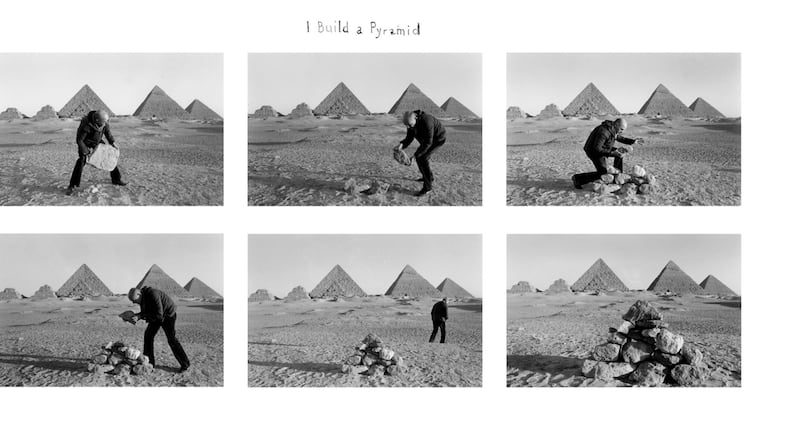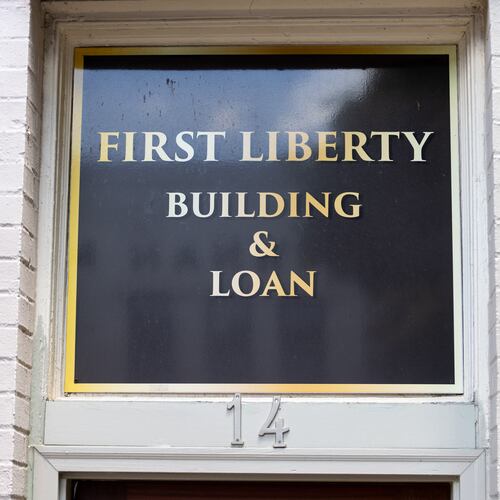PHOTOGRAPHY PREVIEW
Duane Michals
7 p.m. Oct. 6. The artist lectures as part of Atlanta Celebrates Photography. Tickets are free, but reservations are required. High Museum of Art, 1280 Peachtree St. N.E., Atlanta. 404-733-5000, high.org.
Oct. 7-Dec. 3. "Duane Michals: The Narrative Photograph." Jackson Fine Art. 3115 E. Shadowlawn Ave. N.E., Atlanta. 404-233-3739, jacksonfineart.com.
Early on in his career, Duane Michals got bored with straight-on photography because it merely described. He wanted to take pictures with feeling and insight.
“Everything I’ve done has come out of my frustration with the medium,” says the 84-year-old artist, who is famous for coming up with a style of photography that uses sequences of images to form narratives.
This week, the New York photographer comes to town for Atlanta Celebrates Photography, a monthlong festival of exhibits, lectures and public art programs at venues around the city. On the night of Oct. 6, Michals speaks at the High Museum of Art. On Oct. 7, he will attend the opening of an exhibit of his work at Jackson Fine Art in Buckhead.
We recently chatted with the photographer, who has opinions on everything from social media to being a gay artist. “I have a huge body of work on all kinds of subjects,” he says. “And they are all intimate. They are all about vulnerability, the possibility of being hurt, being disappointed. For me, it’s always about trying to figure that out.”
Tell us about yourself. Where are you from?
I was born in McKeesport, Pa., which was one of those little towns along the river of South Pittsburgh. They were all lined with steel mills, one after another, and they all went belly up in the late ’70s. So my dad was a steelworker. The whole family was steelworkers. Given my background, I’m really quite an anomaly. I’m the one that didn’t play football, didn’t play anything. I’d rather read or draw. You get the picture.
How did you get into photography?
I had an aesthetic edge. I knew I would do something in the arts. … In high school, I was the news editor of the school paper, and I took drawing classes at the Pittsburgh Carnegie Museum of Art. It wasn’t until I went to Russia when I was 26, with a borrowed camera. The trip changed my life. I found exactly what I should be doing. I found my thing. My instincts were perfectly lined up in a row. That was it. Most people don’t find their thing, but I was lucky.
You are famous for telling a narrative by taking a sequence of images. How did that come about?
I got frustrated with “the decisive moment” (a term coined by French photographer Henri Cartier-Bresson). I wanted to show the moment before, and the moment after. So I simply stretched the decisive moment to two or three other moments. That gave me wiggle room to tell the story.
Do you take pictures with your cellphone?
No.
Do you post on social media?
Never. I’m a professional. When I pick up the camera, I am very, very serious. I don’t pick it up casually. Sometimes people say: “Here, take a few pictures.” I don’t just take a few pictures. That’s what amateurs do: Take 300 pictures of their dog jumping up and down. I don’t do that. When I pick up the camera, I work.
You’re a gay man, but you have never flaunted that in your photography.
I always tended to deal with issues, the subtlety, the nuance of being gay. You’ll never catch me doing pictures of some hunky person standing looking at you. That’s inanity …
My work is about ideas. It's always about something. When I look at a photo, I think: "What is this picture really about? Well, it's about snow. And it's about a neon sign that says, 'Eat.' It's about a parked car." OK, I don't care about that. Show me something I don't know. Contradict me. Whisper something in my ear.
There’s a photo sequence in your show at Jackson Fine Art. You’re standing in front of the Egyptian pyramids, making your own monument from a pile of rocks. What were you going for?
Everybody’s photographed the pyramids. But I did it my own way. I built my own pyramid, which I thought took chutzpah. … You think of the great tradition of people who have photographed the pyramids. … But I’m the only one that built my own pyramid. It’s the kind of whimsy that I am good at. I don’t think anyone has ever done one before or since. I like work that gives me a giggle.
About the Author
Keep Reading
The Latest
Featured


